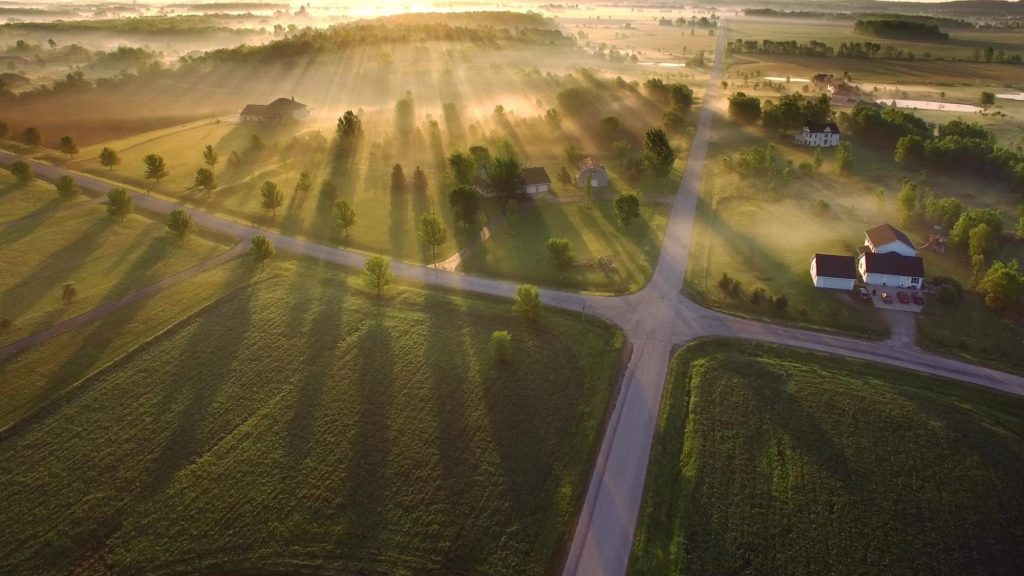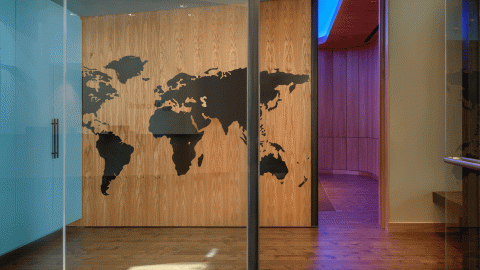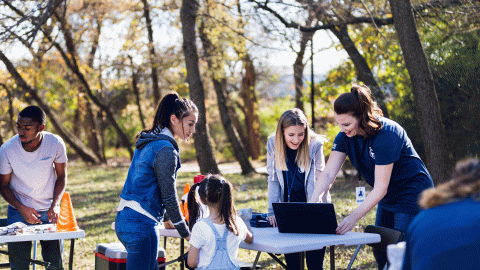What telephones and television can teach us about the adoption of broadband
New technology can help transform lives and communities all over the world. In the United States, the FCC’s most recent report found that more than 21 million Americans lack broadband access. And Microsoft’s data suggest that as many as 162.8 million people in United States do not use the internet at broadband speeds.
Based on the way older technology was rolled out, waiting for organic rates of adoption to close that digital divide is not an option. Especially when the physical infrastructure required to support wires is concerned.
[Subscribe to Microsoft on the Issues for more on the topics that matter most.]
Lessons from the past
Landlines are an example of a wired technology that was slow to take off. Alexander Graham Bell made the first long-distance telephone call in 1877. But it was not until a century later that the technology reached everyone.
Cell phones, however, took just 14 years to get to the point where just about everyone in the U.S. had one. More recently, the smartphone made even that achievement look sluggish; within eight years it, too, had reached majority adoption.
Likewise, it took 25 years for radio to reach near-majority adoption across the U.S. By comparison, cable TV was just above 60% within the same time period.
The slow adoption of the landline compared to the smartphone – as well as cable TV in relation to color TV and radio – can be seen below.
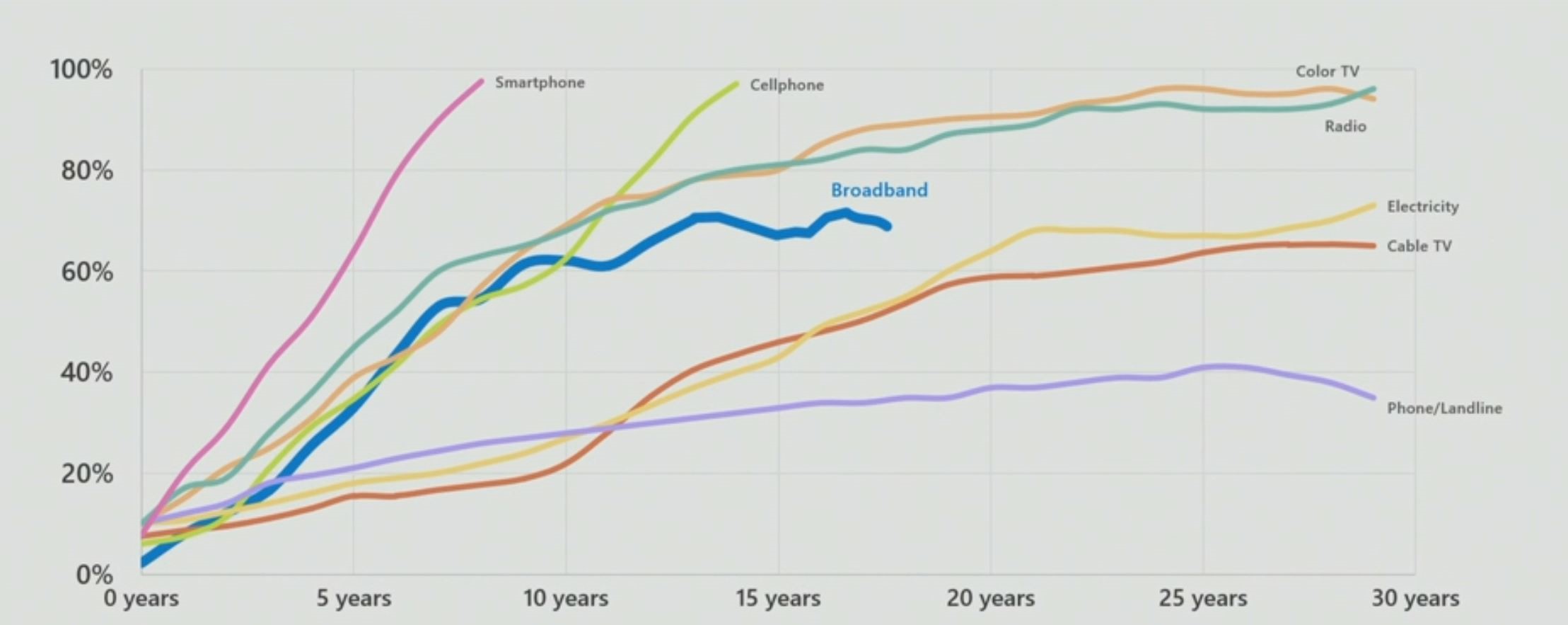
Similarly, the adoption of electricity was slow. Household electricity wasn’t commonplace until the 1920s, and then only in cities. It revolutionized almost every aspect of life in the cities and suburbs. But in rural areas of the U.S., only 10% of the 6 million farms were connected by 1930.
The slow adoption of wired technologies compared to wireless technologies can be seen in this graph. The penetration of wired technologies plateaus at around 70% in the U.S.
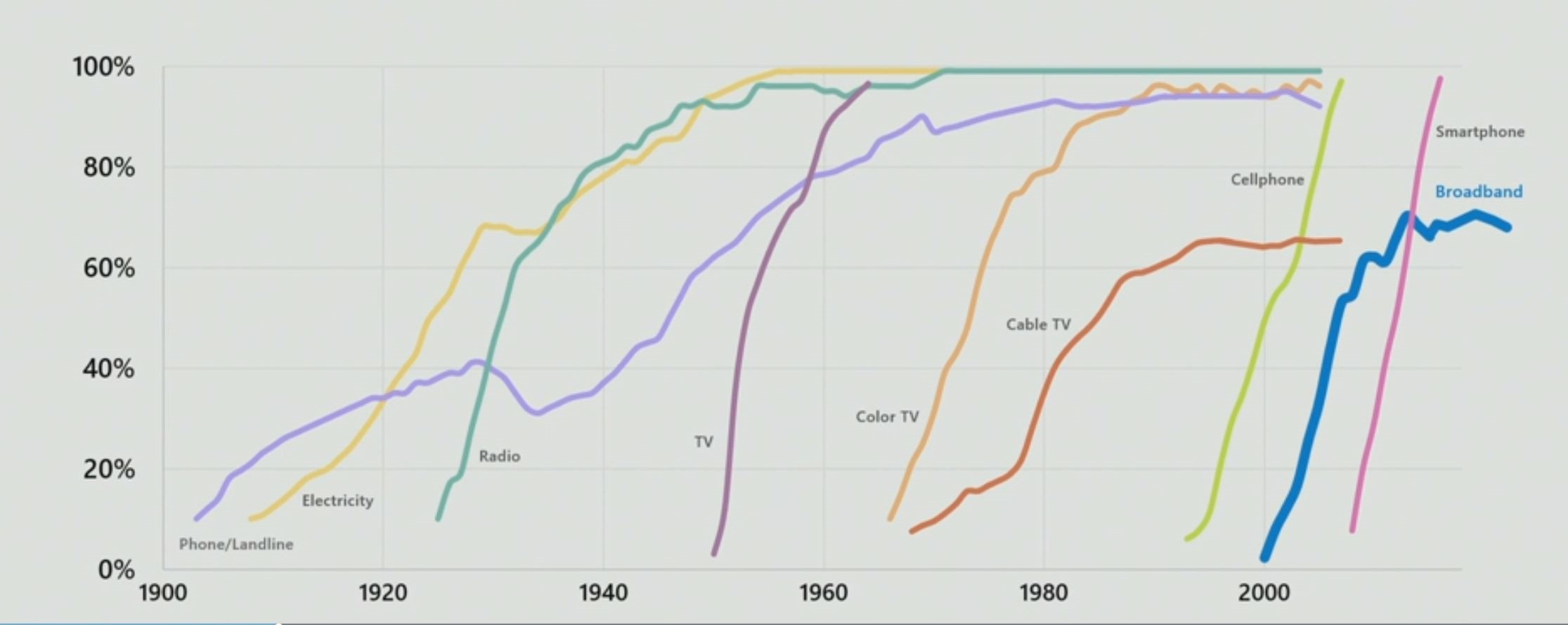
Closing the gap
The reasons for slow rates of wire-based take-up are numerous, and include lower population densities and greater distances between dwellings.
Microsoft believes closing today’s digital divide is a priority and that failing to do so risks leaving behind millions of people.
Fast, reliable internet access is now a necessity for everything from accessing educational resources and building a business, to finding a job and accessing better healthcare.
The Microsoft Airband Initiative is one route to closing the gap. It is based on providing coverage via a range of technologies, including TV white spaces – those unused parts of the broadcast frequency.
Ensuring that last 30% adoption is given the support needed is something that can’t be left to the market alone. It calls for a collaborative approach to finding solutions and overcoming barriers.
For more on the Microsoft Airband Initiative, visit www.microsoft.com/en-us/airband/technology. And follow @MSFTIssues on Twitter.

